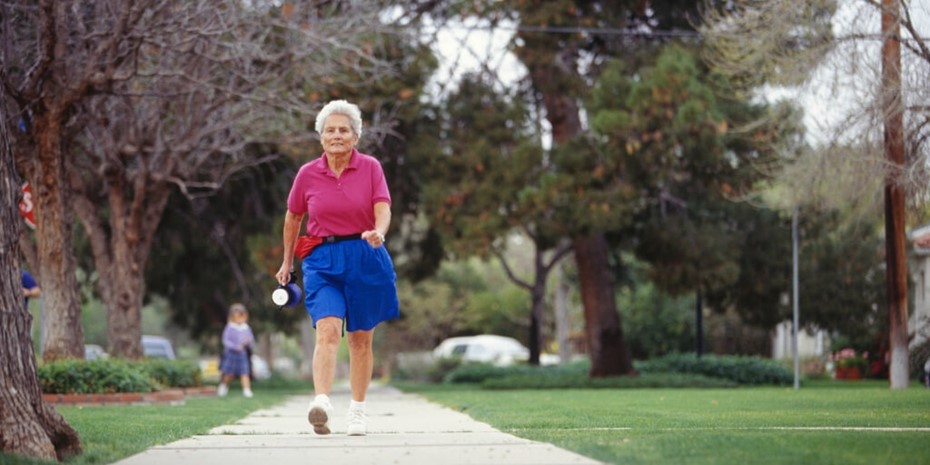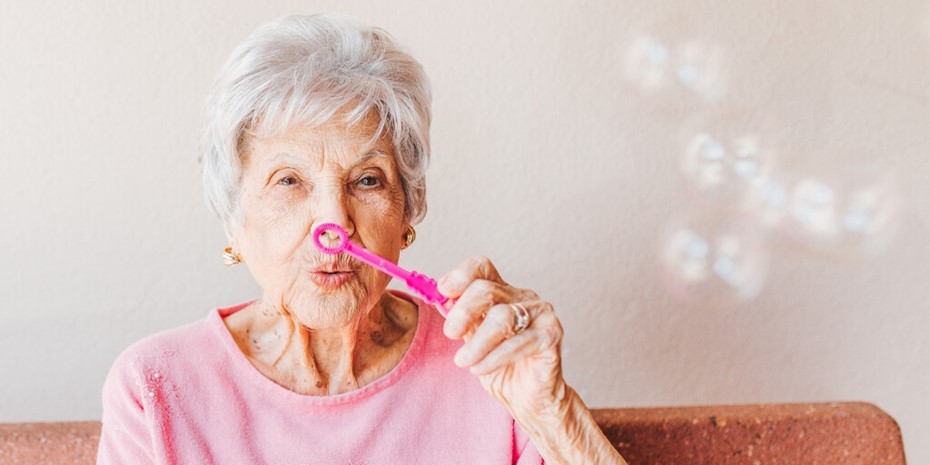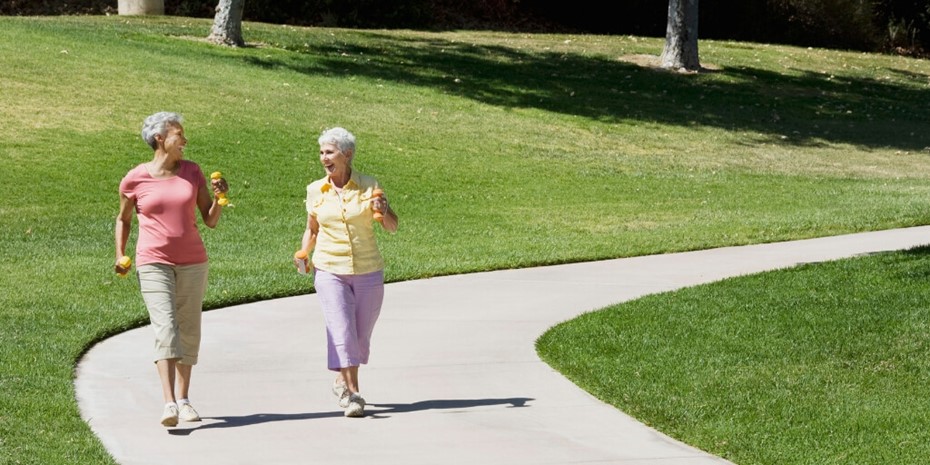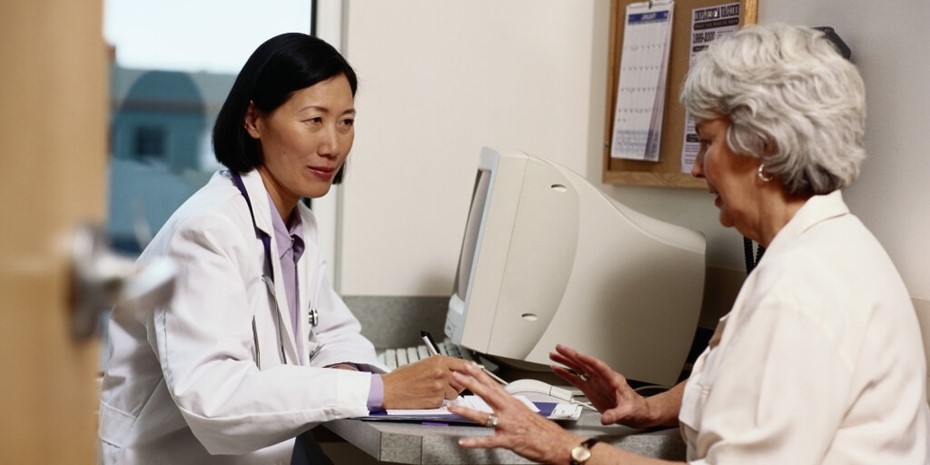
Back in the day, humans had to walk everywhere.
But with everything more spread out these days, plus the added convenience of an always available and air-conditioned car, our lives are a lot more sedentary.
Pair that with working in a desk job or just not having an exercise routine, and we’re really not walking much at all.
Many of us don’t even think about – driving down the road to the deli is just what you do. But as we get older, an inability to walk unattended is often the catalyst for a loss of independence.
By keeping our bodies active, we maximise our ability to do everyday tasks, like grabbing the groceries, stepping into the shower and – god forbid – getting in and out of a car.
Walking is a senior-friendly exercise that’s completely free (besides the small investment of some snazzy new Nikes). All you need is a little motivation to get started and a reason to stick to it.
So with that said, here are 5 reasons why you should tie up those laces today – no matter how old you are.
1. Walking strengthens your whole body

Your bones, joints and muscles will all thank you for keeping them active.
Studies have found that regular walking helps counteract age-related loss of bone mass, as well as reducing the risk of hip fractures – a common injury among seniors.
It also helps prevent arthritis and osteoporosis. The impact from weight-bearing exercises like walking, golf or dancing helps keep your bones strong, making them healthier than if you chose to avoid any strain altogether.
While many older people shy away from walking because of pain, it’s actually a good way to reduce it. Walking keeps the knee and hip joints well lubricated, in turn strengthening the surrounding muscles.
It’s well-known that muscle mass declines with age, and as they say – use it or lose it! You don’t have to channel your inner Arnie – maintaining a regular walking routine, perhaps with a big water bottle in hand, will help you build stronger muscles and reduce pain in the long term.
2. Walking improves your balance & coordination

Walking is a key component of a falls prevention exercise program.
In a study of seniors aged over 75, those who were prescribed a home exercise program that included walking reported less falls than the sedentary control group.
Going for regular strolls helps build lower body strength by engaging your hips, abs and legs, which all collaborate to keep good balance.
Even if it’s just a few laps around the house, don’t avoid walking because you’re afraid of falling – instead, maintain a regular walking routine to help you stay upright for longer.
READ >> Home safety tips for seniors
3. Walking improves your heart health

Regularly getting your heart rate up can improve your cardiovascular health in the long run - literally.
Studies found that after three or more months of regular walking, the seniors in question lowered their resting heart rate and reduced their blood pressure. It can also help lower your risk of stroke, diabetes and heart disease.
Good blood circulation keeps your organs and tissues pumped full of oxygenated blood and nutrients, and is increasingly more important as we get older. Getting your blood moving is a simple and effective way to improve your circulation – a health aspect that goes hand in hand with heart health.
4. Walking helps maintain cognitive function

Staying sharp is a lesser known benefit of regular walking.
By improving your heart health, you’re inadvertently improving your brain health, too.
In a recent study, it was found that exercising three times a week can help improve cognitive function. Combine exercise with a good diet, and the benefits are even greater. After 6 months, three groups of over 65s were tasked with a series of thinking tests. The exercise and diet group averaged 47 points, the exercise-only group averaged 42 points, while the no exercise or diet group averaged 38 points.
Similarly, in a study of women aged 70 to 81, it was found that more physical activity was associated with better cognitive performance. Compared to women with a less active lifestyle, those who exercised the most had a 20% lower risk of cognitive impairment.
5. Walking reduces the risk of disability

Considering walking improves your heart health, balance and coordination, it makes sense that it can help reduce your risk of disability in later life.
In a trial of over 1600 men and women aged 70-89, all of who were relatively frail and did not exercise regularly, half were assigned a daily walking routine plus strength and balance exercises, while the other half maintained their current sedentary lifestyles. After 2.5 years, the group who exercised were 28% less likely to become disabled, which was defined as the inability to walk 365 metres without help.
Tips to keep the habit

With all those benefits, walking to improve your wellbeing is a no-brainer.
But it takes time to really cement a routine. Here are a few strategies to help you form a long-lasting habit.
- Recruit a buddy. Because everything’s better with a friend!
- Join a mall walking group. Your local shopping centre might have one, and it’s a great way to make new friends!
- Buy a pedometer. Aim for the recommended 10,000 steps a day – or as close as you can get to it.
- Walk somewhere pretty. You probably know your own neighbourhood like the back of your hand. Instead, venture somewhere different and soak in the new scenery.
- Bring some headphones. You could listen to an audio book or walk to the beat of your favourite tunes.
- Be accountable. Tell someone you’re going for a half hour walk every other day. Publicly vocalising your goal is a great psychological trick to help you stick to it!
- Get some new threads. Sportswear is fashionable these days, so get out and strut your stuff!
- Walk your dog. Or your neighbour's dog. Or a cat. People walk cats, right?
READ >> 4 reasons why pets are so good for our wellbeing
Before you get started

The Department of Health and Ageing recommends 30 minutes of physical activity each day.
But before you set out on your new routine, talk to your GP or physiotherapist to decide what exercise is right for you. And remember – it doesn’t have to be strenuous to be good for you.
Make sure you have a good pair of shoes and don’t be shy to bring along a cane or walker if it helps you keep your balance or reduces pressure on your joints.
Brightwater At Home offers support for seniors living at home. Our team includes physiotherapists that can tailor a personal exercise program based on your level of fitness, as well as occupational therapists that can assess your ability to do everyday tasks.



